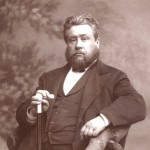 God’s Work in Salvation – Spurgeon – Edited by Alistair Begg
God’s Work in Salvation – Spurgeon – Edited by Alistair Begg
Salvation belongs to the Lord! – Jonah 2:9
Salvation is the work of God. It is He alone who quickens the soul “dead in…trespasses and sins,”1 and He it is who maintains the soul in its spiritual life. He is both “Alpha and Omega.”
“Salvation belongs to the LORD!” If I am prayerful, God makes me prayerful; if I have graces, they are God’s gifts to me; if I hold on in a consistent life, it is because He upholds me with His hand. I do nothing whatever toward my own preservation, except what God Himself first does in me. Whatever I have, all my goodness is of the Lord alone. Whenever I sin, that is my own doing; but when I act correctly, that is wholly and completely of God. If I have resisted a spiritual enemy, the Lord’s strength nerved my arm.
Do I live before men a consecrated life? It is not I, but Christ who lives in me. Am I sanctified? I did not cleanse myself: God’s Holy Spirit sanctifies me. Am I separated from the world? I am separated by God’s chastisements sanctified to my good. Do I grow in knowledge? The great Instructor teaches me. All my jewels were fashioned by heavenly art. I find in God all that I want; but I find in myself nothing but sin and misery. “He only is my rock and my salvation.”2
Do I feed on the Word? That Word would be no food for me unless the Lord made it food for my soul and helped me to feed upon it. Do I live on the bread that comes down from heaven? What is that bread but Jesus Christ Himself incarnate, whose body and whose blood I eat and drink? Am I continually receiving fresh supplies of strength? Where do I gather my might? My help comes from heaven’s hills: Without Jesus I can do nothing.
As a branch cannot bring forth fruit except it abide in the vine, no more can I, except I abide in Him. What Jonah learned in the ocean, let me learn this morning in my room: “Salvation belongs to the LORD.”
1) Ephesian 2:1
2) Psalm 62:2

